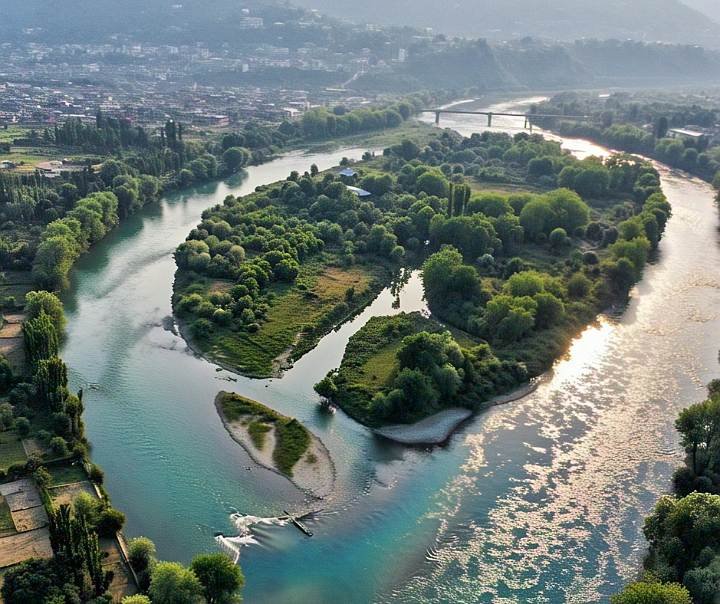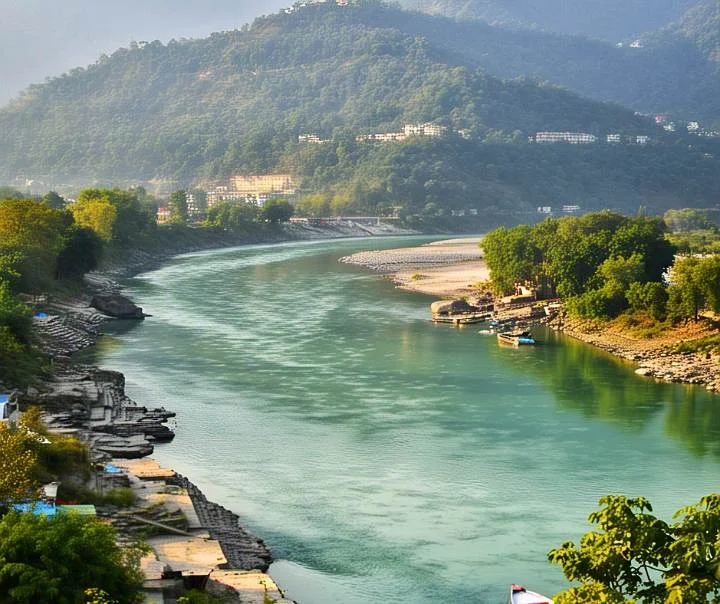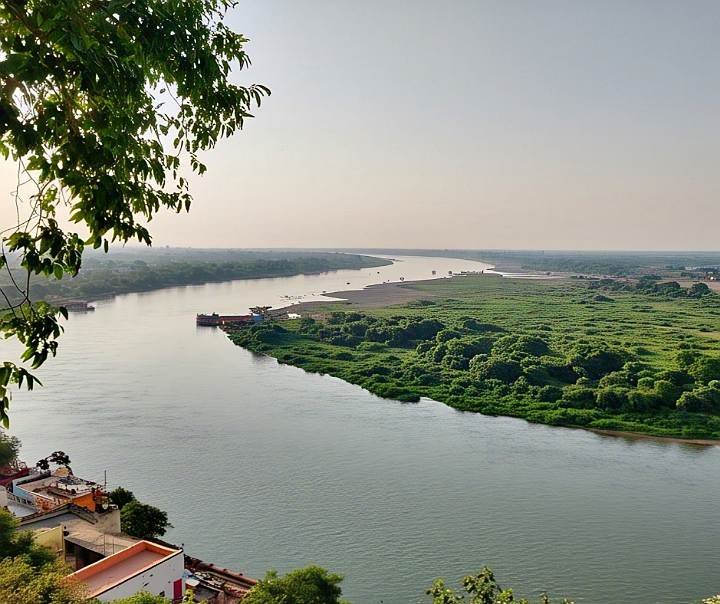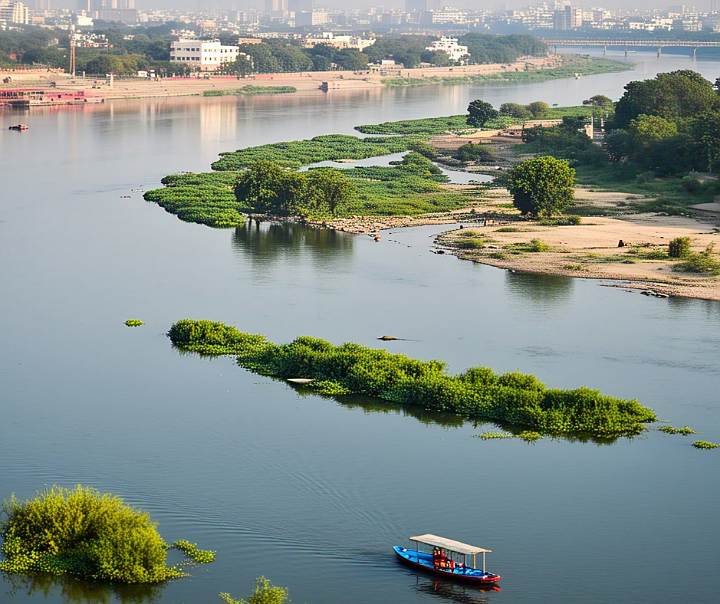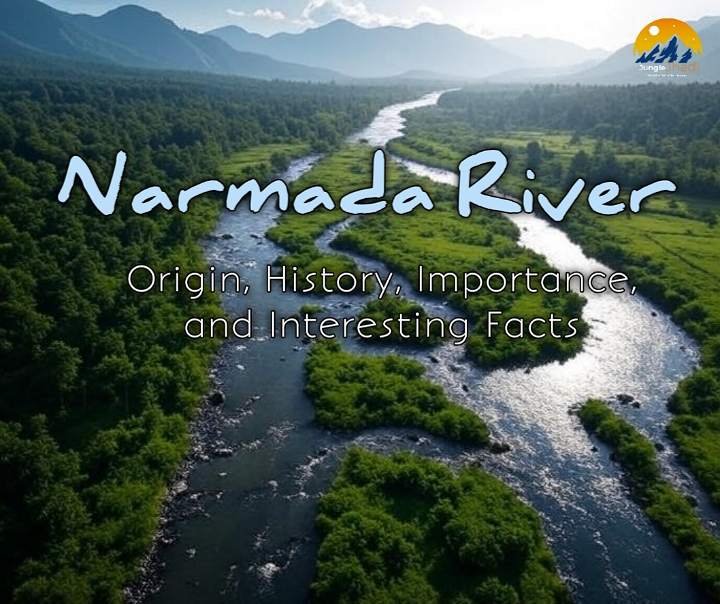The Amazon River: A Comprehensive Journey from Source to Sea
The Amazon River, known as the world’s largest river, is not only celebrated for its massive water flow but also as a symbol of South America’s cultural, ecological, and geographical heritage. This river embarks on a remarkable journey from its source to its confluence with the Atlantic Ocean, showcasing nature’s grandeur and diversity. we will explore the Amazon River’s origin, its course, tributaries, ecosystem, and fascinating facts in detail.
Introduction to the Amazon River
The Amazon River is the largest river in South America and the world in terms of water discharge and drainage basin size. Stretching approximately 6,400 kilometers (about 4,000 miles), some studies suggest its length could be between 6,992 and 7,062 kilometers. It is considered the second-longest river globally after the Nile, though some scientists argue it may surpass the Nile in length.

The Amazon’s drainage basin spans roughly 7 million square kilometers (2.7 million square miles), covering about 40% of South America. Flowing through countries like Peru, Brazil, Colombia, Ecuador, Venezuela, Bolivia, and Guyana, the majority of the river lies in Brazil. The Amazon is so vast that it accounts for about 20% of the world’s total river water flow into the oceans, earning it the nickname “River Sea.”
The Origin of the Amazon River
The Amazon River originates in the Andes Mountains of Peru, located on the western edge of South America. For centuries, the Apurímac River, starting at the Nevado Mismi mountain, was considered the river’s farthest source. However, a 2014 study proposed that the Mantaro River, originating in the Cordillera Rumi Cruz, might be the true source.
- Apurímac River Source: A small glacial spring called Quebrada Carhuasanta on Nevado Mismi, at an altitude of about 5,597 meters (18,363 feet), is traditionally regarded as the Amazon’s source. This point is only 160 kilometers from the Pacific Ocean.
- Mantaro River Claim: In 2014, James Contos and his team used GPS and satellite imagery to argue that the Mantaro River is 75-92 kilometers longer than the Apurímac. However, some geographers dispute this, as the Mantaro dries up for five months each year, whereas a river’s source should flow year-round.
Both rivers (Mantaro and Apurímac) merge to form the Ucayali River, which later joins the Marañón River. This confluence near Iquitos, Peru, is considered the starting point of the Amazon’s main stem in some regions. In Brazil, this section is called the Solimões River until it meets the Rio Negro, forming the famous Meeting of the Waters (Encontro das Águas).
The Course of the Amazon River
The Amazon River undertakes a long and intricate journey from its source to the Atlantic Ocean, flowing west to east across diverse landscapes. Its course can be divided into the following stages:
- Andes Mountains Origin:
- The Amazon begins as small streams and glacial springs in the Andes. These streams cascade rapidly, forming smaller rivers like the Apurímac, Mantaro, and Marañón.
- In this region, the river’s flow is swift, passing through deep valleys and waterfalls.
- Ucayali and Marañón Confluence:
- The Apurímac and other tributaries merge to form the Ucayali River, which joins the Marañón near Iquitos, Peru. This is often considered the Amazon’s main stem.
- At this point, the river widens, and its flow slows down.
- Solimões and Rio Negro Confluence:
- In Brazil, the river formed by the Ucayali and Marañón is called the Solimões. It meets the Rio Negro near Manaus, creating the “Meeting of the Waters.” Here, the distinct colors of the rivers (Solimões’ muddy brown and Rio Negro’s black) flow side by side for kilometers without mixing.
- Main Amazon Flow:
- After Manaus, the river is officially called the Amazon. It becomes massive, flanked by dense rainforests (the Amazon Rainforest).
- The river flows through Brazil’s plains, collecting water from numerous tributaries.
- Confluence with the Atlantic Ocean:
- The Amazon’s estuary, located on Brazil’s northeastern coast, is about 330 kilometers wide. It splits into three main channels near Marajó Island: the Northern Channel, Southern Channel, and Breves Channel.
- The river discharges so much freshwater into the Atlantic that it dilutes the ocean’s salinity up to 160 kilometers offshore.
Tributaries of the Amazon River
The Amazon’s strength and enormity stem from its over 1,100 tributaries, 17 of which are longer than 1,500 kilometers. These tributaries supply water, sediment, and nutrients to the main river. They are classified into three types: whitewater, blackwater, and clearwater.
Major Tributaries
- Rio Negro:
- The largest tributary, contributing about 20% of the Amazon’s water flow. It flows through Brazil, Venezuela, and Colombia.
- Stretching 2,250 kilometers, it is a blackwater river with dark water due to humic acid.
- Its largest tributary, the Branco River, originates in the Guyana Highlands.
- Madeira River:
- The second-largest tributary, 3,250 kilometers long, flowing through Bolivia and Brazil.
- A whitewater river, it carries heavy sediment from the Andes.
- Its main tributaries are the Mamoré and Guaporé.
- Purus River:
- Spanning 3,211 kilometers, it flows through Peru and Brazil. It is a whitewater river.
- Japurá River:
- Known as the Caquetá in Colombia, it is 2,820 kilometers long. A whitewater river, it flows along the Colombia-Brazil border.
- Tocantins River:
- This 2,639-kilometer river flows through Brazil. Though some consider it an Amazon tributary, it is technically a separate river system.
- Juruá River:
- Flowing through Peru and Brazil, it is 2,400 kilometers long and a whitewater river.
- Xingu River:
- At 1,979 kilometers, it flows through Brazil and is a clearwater river.
- Ucayali River:
- Flowing through Peru, it is 1,900 kilometers long and a key upper Amazon river.
- Marañón River:
- Flowing through Peru, it is 1,415 kilometers long and considered the Amazon’s main source.
Types of Tributaries
- Whitewater Rivers: Appear muddy or brown due to sediment from the Andes. Examples: Madeira, Purus, Juruá.
- Blackwater Rivers: Dark due to humic acid from decaying plants. Example: Rio Negro.
- Clearwater Rivers: Clear water from ancient rock formations. Examples: Xingu, Tapajós.
The Amazon River Ecosystem
The Amazon River and its basin are home to the world’s largest tropical rainforest, the Amazon Rainforest, often called the “Lungs of the Earth” for its role in regulating global oxygen and carbon cycles.
Rainforest and Flooding
- Várzea (Flooded Forests): During the rainy season, the Amazon and its tributaries overflow, flooding surrounding forests up to 9 meters (30 feet). These flooded forests, called “várzea,” are the largest of their kind globally.
- The flooded area expands from 110,000 square kilometers to 350,000 square kilometers during the rainy season.
- Floods enrich the soil and provide breeding grounds for many species.
Biodiversity
The Amazon basin is a treasure trove of biodiversity, hosting:
- Fish: 2,500 to 5,000 fish species, including piranhas, electric eels, and arapaima.
- Mammals: The Amazon River dolphin (pink dolphin) and giant manatee inhabit the river.
- Reptiles: Green anacondas, emerald tree boas, and caimans (a type of alligator) are common.
- Birds: Over 1,500 bird species, such as macaws, toucans, and hummingbirds.
- Plants: The Amazon Rainforest hosts millions of plant species, contributing to over 50% of global biodiversity.
Climate and Rainfall
- The Amazon basin receives an average of 9 feet (2.7 meters) of rainfall annually. About 50% of this returns to the atmosphere through evaporation from trees.
- The dense forest creates its own rainfall, known as “flying rivers,” through transpiration.
Geological History of the Amazon River
The Amazon River’s history dates back millions of years. Geological studies reveal:
- Millions of years ago, the Amazon flowed west to east, emptying into the Pacific Ocean.
- The formation of the Andes Mountains blocked its flow, redirecting it eastward toward the Atlantic.
- During the Pliocene Epoch (5.3 to 2.6 million years ago), the Amazon basin was a vast freshwater lake called Lake Belterra.
Cultural and Historical Significance
The Amazon River is not just a natural wonder but a lifeline for South American civilizations.
- Ancient Civilizations: Settlements from 7500 BCE to 4000 BCE existed in the Amazon, with remnants found in shell mounds.
- Trade with Andean Civilizations: Amazonian group traded with Andean cultures like the Muisca and Inca.
- European Exploration: In 1541, Spanish explorer Francisco de Orellana navigated the river and named it “Amazon” after encountering warrior women, reminiscent of the Amazons in Greek mythology.
Unique Features of the Amazon River
- Navigation: The Amazon is so deep and wide that large ocean-going ships can reach Manaus (1,500 km from the mouth), and smaller vessels can travel to Iquitos (3,600 km).
- Pororoca: At the Amazon’s estuary, Atlantic Ocean tides create a massive wave called the Pororoca, traveling at 15-25 km/h up to 420 km upstream.
- Coral Reef: Scientists recently discovered a coral reef system at the Amazon’s mouth, thriving in its murky waters.
Challenges and Conservation
The Amazon River and its rainforest face significant environmental challenges:
- Deforestation: Forests are cleared for agriculture, mining, and logging.
- Pollution: Mercury from gold mining pollutes the river.
- Climate Change: Droughts and temperature changes affect river flow. In 2023, Amazon tributaries reached their lowest levels in a century.
Conservation Efforts:
- Organizations like the World Wildlife Fund (WWF) and Amazon Aid work to protect the river and rainforest. WWF Amazon
- National parks and indigenous reserves have been established in the Amazon basin.
Conclusion
The Amazon River is more than a river—it is a vibrant ecosystem sustaining millions of species and cultures. Its journey from the Andes to the Atlantic Ocean reflects nature’s boundless power and beauty. However, preserving this “River Sea” for future generations is our collective responsibility. Let’s unite to protect this natural marvel.
